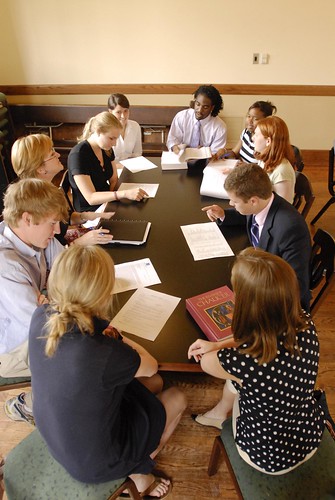 Some courses more easily lend themselves to understanding multiple perspectives, global events and controversies, and multicultural issues because of their content. But “inclusive classrooms” are not just about course content; indeed, in terms of pedagogy, any faculty member can try to achieve an “inclusive classroom.”
Some courses more easily lend themselves to understanding multiple perspectives, global events and controversies, and multicultural issues because of their content. But “inclusive classrooms” are not just about course content; indeed, in terms of pedagogy, any faculty member can try to achieve an “inclusive classroom.”
We know some things that a faculty member should not do if she or he wants to create an inclusive classroom environment. One should avoid:
- Calling on individual African American students (or individual students from any other group) to speak for a whole race or category of people.
- Making jokes or derogatory comments about groups of people – or laughing or being silent when other people do so.
- Assuming everybody understands the same cultural references (to television shows, music, etc).
Equally important, though, is figuring out how to create an environment in which all students feel supported to learn and explore course material, participate in class, and view themselves as people who “belong” in a community of learners. To begin achieving this, faculty members could:
- Establish clear expectations for what they mean by “good class participation” and make that participation begin on the first day of class.
- Get to know students as individuals and treat them as such.
- Think about how they want to handle controversial topics and respond to inflammatory or insensitive comments, or insure that multiple perspectives might be included.
Many more tips can be found on the Practical Suggestions for Inclusive Classrooms webpage.
Inclusive Classrooms is a faculty resource project spearheaded by Associate Director of the Center for the Advancement of Teaching and Learning Mary Jo Festle. This project was created out of a research-based recognition that students perform better if they feel they “belong.” For more ideas and resources on how to foster inclusive classrooms in regards to both content and pedagogy, as well as to read about what other faculty are doing and student experiences visit the Inclusive Classrooms website.
Image by Flickr user Sewanee: The University of the South / Creative Commons licensed BY-NC-SA 2.0








 Follow
Follow